Are You In The Shrinking Middle Class?
 Who’s middle class and who isn’t? In the realm of money and finances this has to be one of the most contentious questions. To be middle class is to insinuate that you’re in or near the middle of the range of actual incomes.
Who’s middle class and who isn’t? In the realm of money and finances this has to be one of the most contentious questions. To be middle class is to insinuate that you’re in or near the middle of the range of actual incomes.
Perhaps a quick math reminder is in order just to make sure we’re all on the same page. Median and average are not the same, yet I see the two used interchangeably all the time, even in the financial independence community.
Median is the middle in a set of numbers. So in this set of five numbers – 29, 37, 72, 145, 201 – the median is 72.
To get an average (also called mean) we simply add the numbers up and divide by their number, or how many there are.
So in that same set of five numbers – 29, 37, 72, 145, 201 – the average is 96.8.
If you’re yawning and saying “yeah thanks for the 3rd grade math review”, you obviously don’t pay attention to how much this gets screwed up, including in major media outlets. All the time.
The official median household income in America is $63,200. That’s the 2018 data since the official data for 2019 are not yet released. But the average household income in America from the same 2018 data is $90,021. Big difference.
Stuck In The Middle
Back to the original question, are you in the shrinking middle class? One could make an obvious argument that if your household earned $63,200 in 2018, you were in the exact middle of all households in America. Thus you couldn’t have been any more middle class, you were the middle.
But what if that was in San Francisco, or Manhatten? Or what if it was in the Appalachia region of southwestern Virginia? Those two examples are some of the highest and lowest cost of living areas in America, so your $63,200 would in reality look very different in each.
When you factor in cost of living in a country the size of America, it obviously gets complex real fast. Thankfully the folks at the Pew Research Center have done the work for us. For a long time now the PRC has conducted what is considered the gold standard of income analysis in America.
And they have this handy calculator that will tell you if you’re in the middle class, or perhaps the upper class or lower class.
Solid Methodology
 Now that you’re back and you know your official class, I wanted to quickly discuss their methodology. First, how did they classify upper, middle, and lower? From their page:
Now that you’re back and you know your official class, I wanted to quickly discuss their methodology. First, how did they classify upper, middle, and lower? From their page:
In our analysis, “middle-income” Americans are adults whose annual household income is two-thirds to double the national median, after incomes have been adjusted for household size. Lower-income households have incomes lower than two-thirds of the median, and upper-income households have incomes that are more than double the median. In 2018, the national middle-income range was about $48,500 to $145,500 annually for a household of three. Lower-income households had incomes less than $48,500 and upper-income households had incomes greater than $145,500 (incomes in 2018 dollars).
Next, when we say “median household income” what does “household” mean? Here’s how the folks at Pew account for that factor:
The income is revised upward for households that are below average in size and downward for those of above average size. This way, each household’s income is made equivalent to the income of a three-person household (the whole number nearest to the average size of a U.S. household, which was 2.5 in 2018)
So they tackled that issue. But what about the harder issue, that of the cost of living in your area? From their page:
Jackson, Tennessee, is a relatively inexpensive area, with a price level in 2018 that was 19.0% less than the national average. The San Francisco-Oakland-Hayward metropolitan area in California is one of the most expensive areas, with a price level that was 31.6% higher than the national average. Thus, to step over the national middle-class threshold of $48,500, a household in Jackson needs an income of only about $39,300, or 19.0% less than the national standard. But a household in the San Francisco area needs a reported income of about $63,800, or 31.6% more than the U.S. norm, to join the middle class. The income calculator encompasses 260 of some 384 metropolitan areas in the U.S., as defined by the Office of Management and Budget. If you live in an area outside of one of these 260 areas, the calculator reports the estimates for your state.
So the 260 areas are defined by the OMB, but the cost of living numbers for those areas come from the official government source which is the Bureau of Economic Analysis. All the data is at that link, but like all government data there’s too much and its too clunky and complex to deal with.
Thankfully the geeks at Pew did the work for us. I’ve seen other analysis of “classes” in America and I think the Pew’s methodology is by far the most solid and uses the best data.
Now You Know
So now you know what class you’re in. And if you read the research it’s fascinating to see how people don’t necessarily identify themselves correctly when asked. Gallup does research on this every year and compares it to the Pew data, and this is a fascinating read that explains how Americans see themselves.
I’ll make a statement that’s very controversial but that’s clearly backed up by the data. When many claim that the middle class has shrunk over the years, they’re correct. But it hasn’t shrunk because middle class folks are falling into the lower class, it’s because so many have jumped to the upper middle class or upper class.
As this chart clearly shows, the growth in the upper middle class and rich has been astounding, while the other classes have all shrunk.

But that’s not really the narrative the media feeds us now is it? And as I showed in my own analysis of the raw numbers, median household income has outpaced inflation since 1984, by a good margin.
The official 2019 income data should be coming out sometime in September and I’m almost certain we’ll see another strong increase. But of course that’s still pre-COVID-19. We’ll have to wait a full year to see the first data that includes COVID-19 impacts.
Either way, it’s clear that since the 1980’s people in America continue to move from the poor, lower, and middle classes to the upper middle class and the rich.
Your Turn – Are you in the middle class? Comment below!






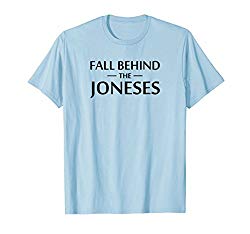


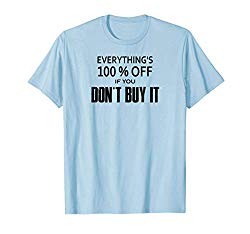


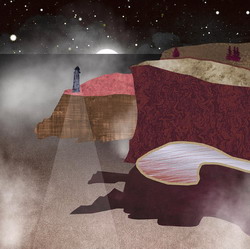
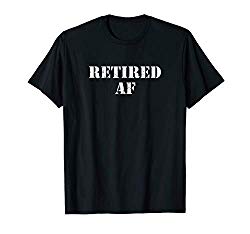

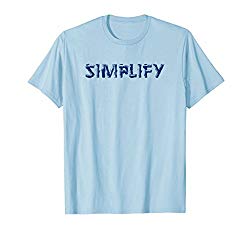
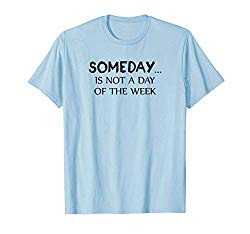



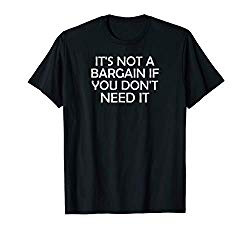
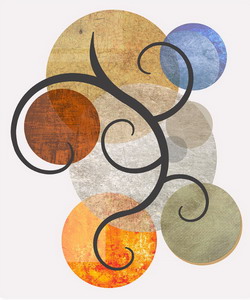






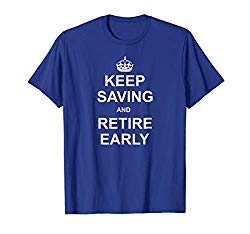
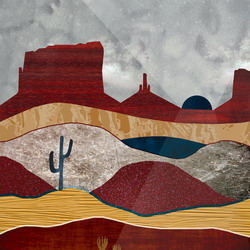













There is such a negative connotation to being in the rich class that most people at most would say they are in the upper middle class.
Growing up as a son of a doctor I felt we were upper middle class. Even now I feel that is likely where I feel I am in even though some may push me up even further. I personally view that class as the private jets and yacht types which I am not.
Yes, the hate for the rich has been increasing and many include the upper middle class in their hate. It’s sad.
We happen to be upper-middle class ourselves. Can the media and politics ever get past narratives and actually look at data? Likely not, which is a bummer.
Nope, the media just does what it wants. And in this age of instant access to information you’d think blatantly lying would be harder, but it’s not
Great article, I’m glad to see many Americans are moving up in income…this wasn’t my perception at all. Seems like a more positive reality than most people believe!
It’s much more positive than most people think. Just like most things such as the amount of crime in america and poverty around the world – all are and have been improving for a long long time now, but that doesn’t make for good news stories.
i’ve always pretty well known we were solidly middle class. of course at this point we could be making quite a bit more but choose to work less and less hard for less money because we no longer need the extra. i wonder about net worth sometimes as i suspect we’re closer to the top of that than we are in income. we’re by no means rich but when you take into account debt of zero that makes a big difference in a comfortable life. that part of s.w. virginia is an odd place we drive through ‘most every year near rocky gap and the n.c. border.
this is based on income only since that data is much more easily measured by the government through the IRS etc. When it comes to net worth, yeah that’s a whole nother story. I’m definitely in the rich class I guess.
And Appalachia is crazy-poor, the poorest areas in America are there. Those areas have natural beauty but are awfully depressing when you get to an old mining town. Hopeless poverty
I love the PRC calculator and thanks for sharing. Based on current actual, taxable retirement income, we Fates are middle class both here in rural WA and, kind of surprisingly, in our former So. Cal. as well. I also like the growth chart – definitely a bit contrary to the media narrative.
Well in SoCal I assume to be upper middle class you have to get that income up high, it’s expensive there. Same here in the DC area
We’re in the middle class. Life is good. I wouldn’t want it any other way.
Life is good indeed Joe!
I’m a huge fan of the Pew Research Center’s income calculator as well as their reports. Thank you for bringing this one to the attention of your readers!
Last week, my partner and I were discussing his aging parent’s recent remark that they know they’re “middle class but doesn’t feel middle class”. The Pew calculator confirms their household’s placement in the middle income tier; however, they feel their income no longer affords the middle class lifestyle they had grown up in and come to expect for their lifetime. As the proportion of the population that is upper middle class grows, folks that are solidly in the middle seem to compare themselves and feel like they’re falling short. Another example of how unhappiness appears in the gap separating expectations from reality.
What a great comment and very perceptive. When you hear complaints that “the middle class can’t afford to live anymore” I think lots of that is the fact that they’re comparing themselves to the upper middle class, which as the chart shows is a relatively new class of people and growing fast. Bottom line is that the middle class is shrinking in number because folks are getting richer and moving up. And middle class incomes themselves have been beating inflation for over 40 years now.
Very interesting Dave, I had no idea that the middle class has been growing since the 80’s. Especially with all the downsizing and outsourcing the corporations have been doing for years.
I wonder if the average (or median) savings is reflected with this increased prosperity. I read something the other day that the average American can’t afford an unexpected bill of more than $400.
I assume you meant to type that the “upper” middle class has been growing. Yep, the data are what they are, and income data is about as solid as Federal data get. It’s hard to fudge it. As for the $400 thing, just because a family is upper middle class doesn’t mean they can come up with $400 easily. Here in the DC area there’s TONS of families like that. Two $40,000 SUVs in the driveway, a 4,000sq ft. house, and tens of thousands in consumer credit card debt. Sure they could go to the ATM and take $400 more out of their credit card, but does that even count?
Don’t mind admitting our upper class income both before and since retiring slightly early. But my lifestyle has always been and remains middle class. Maybe verging on upper middle class sometimes. My parents were middle class lifestyle millionaires also.
You’ve done quite well my man. And thats how to do it – gain the income of upper middle class and live middle class. That’s a sure-fire way to FIRE and wealth.
I went to college in Appalachia. Coming from a typical middle class suburban area with professionals, it was a culture shock. Really, I mean that in a good way. Eye opening. A different world, and yes, much less expensive to live there.
That said, we’re a world apart nowadays and no surprise we’re easily in that upper class income category. Next year, as our income dwindles with early retirement settling in, I’m thinking we’ll fall back to middle class. Nothing wrong with that.
Of course, one obvious issue with this categorization is the focus on income rather than wealth. But, that’s a different topic. 🙂 Thanks for sharing!
As I commented above Appalachia is a part of America that many should see, especially the urban coastal elites. I think they’d be shocked.
Well, combined the Mrs. and I are probably upper middle class by this definition, but it sure doesn’t feel like it. Everywhere around us, people are spending money like mad-cakes. It makes us look poor by comparison… but I suspect it’s simply people spending a high income.
After all, the true measure of wealth isn’t how much you make, it’s how much you keep! 🙂
You’ve already beaten the psychological aspects of looking “poor by comparison”, so it doesn’t matter to you. But to your point, this one thing is what destroys the finances of most and also what makes the middle class claim they can’t afford a middle class lifestyle anymore – they’re really comparing to upper middle class people.
Very interesting. This is totally consistent with what I see around me all the time – shiny new cars all over the freeway and new construction homes that are all ginormous. We’re upper middle class and live like we’re middle class, with very modest cars and house, and we’re happy and have a great life. But whenever I hear about the middle class shrinking, I’m like, “How is that possible when pretty much everybody has a fancier house and car than I do?” I’ve never bought it, and your numbers are great validation.
Yep. If you look at what middle class was in the 70’s and 80’s and compare it to now, it’s obvious that the standard of living now is higher. But the upper middle class keeps swelling, and as those articles I linked to show, many in that class consider themselves middle class, but they’re clearly not. Thanks for the comment!